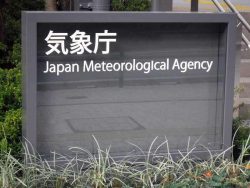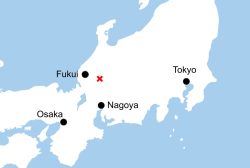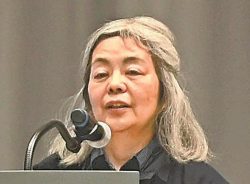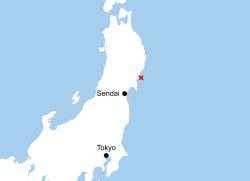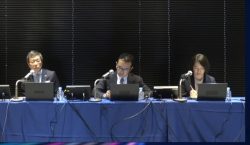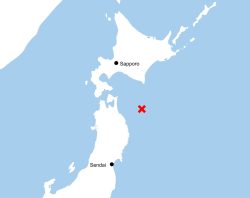Tohoku Police Find Names, Closure for Unidentified Remains from Great East Japan Earthquake

Shinichi Sugawara, chief of an unidentified decedents and missing persons investigation unit, looks inside a cabinet at the Miyagi Prefectural Police Headquarters on Feb. 8. Cabinets in the unit’s office contain photographs and files on unidentified victims of the Great East Japan Earthquake.
18:19 JST, March 3, 2021
SENDAI — Investigators are still working to identify the remains of dozens of victims who remain unaccounted for nearly a decade after the Great East Japan Earthquake upended the Tohoku region on March 11, 2011.
At the end of January this year, the number of victims with unidentified remains stood at six in Miyagi Prefecture and 48 in Iwate Prefecture, according to the National Police Agency.
In Miyagi, where over 9,500 people died in the quake and tsunami, the prefectural police set up a dedicated investigation unit, charged with the painstaking task of combing through all available clues to finally put names to the remains and bring families some long-awaited closure.
Established in November 2011, the Unidentified Decedents and Missing Persons Investigation Unit operates out of the basement office of the Miyagi Prefectural Police Headquarters in Sendai. The four-person team is led by Inspector Shinichi Sugawara, 63, a forensics veteran who was rehired after retirement in April 2018.
When Sugawara began heading the unit, Miyagi Prefecture had 10 open cases, and after years of searching, the mood was less than optimistic. Although many said identifying the last remains would be an impossible task, Sugawara never forgot the unofficial motto often repeated within the unit: “Let’s return all the unidentified victims to their families.” He began by going back to the drawing board, and reexamining what was known about each set of remains.
Among the 10 enigmatic cases was the body of a woman that had been found off the coast of Ishinomaki, Miyagi Prefecture, by a Self-Defense Forces helicopter on April 3, 2011, just three weeks after the disaster. The woman was 156 centimeters tall and had a 20-centimeter surgical scar stretching across her abdomen. Badly decomposed with no clothing or belongings to aid in identification, the body became known simply as “Onagawa 348,” after the medical examiner’s office in Onagawa where it was stored.
The team turned to a database of victims who had been positively identified after being washed out to sea, factoring in ocean current patterns in a triangulating technique they call “mapping pointing.” Ultimately, the investigators inferred that the woman had likely been somewhere along the coast, near the border between Iwate and Miyagi prefectures at the time of the disaster.
The area had 80 or so unresolved missing person reports then, 42 of which were for women. Further filtering by height, age and other available data, the team pared the list down to two potential matches, including Kiyoe Abe, a then-86-year-old patient at Ogatsu Hospital in Ishinomaki who disappeared when the hospital was swallowed up in the tsunami.
The third daughter in a family of 10 children, Abe had no children of her own, and her parents and siblings were all since deceased. After making inquiries with local record offices, the team was able to piece together a family tree extending out to six degrees of genealogical separation, and found the surviving relatives needed for a DNA test to identify “Onagawa 348” as Abe.
Just to be sure, they went to speak with nurses who had worked at the hospital. When shown a photo of Abe, the nurses tearfully confirmed that she was indeed “Kiyoe-san.” Her ashes were handed over to a distant relative last December. Sugawara said that he felt relieved to have been able to close the case.
Over the past three years, the team has identified four victims, including Abe. In other words, there are still six more cases to solve. “Now that a decade has passed, we’ve begun to lose the people who would have known or been relatives of the victims,” said Sugawara. “The clock is ticking, so our task is even more urgent.”
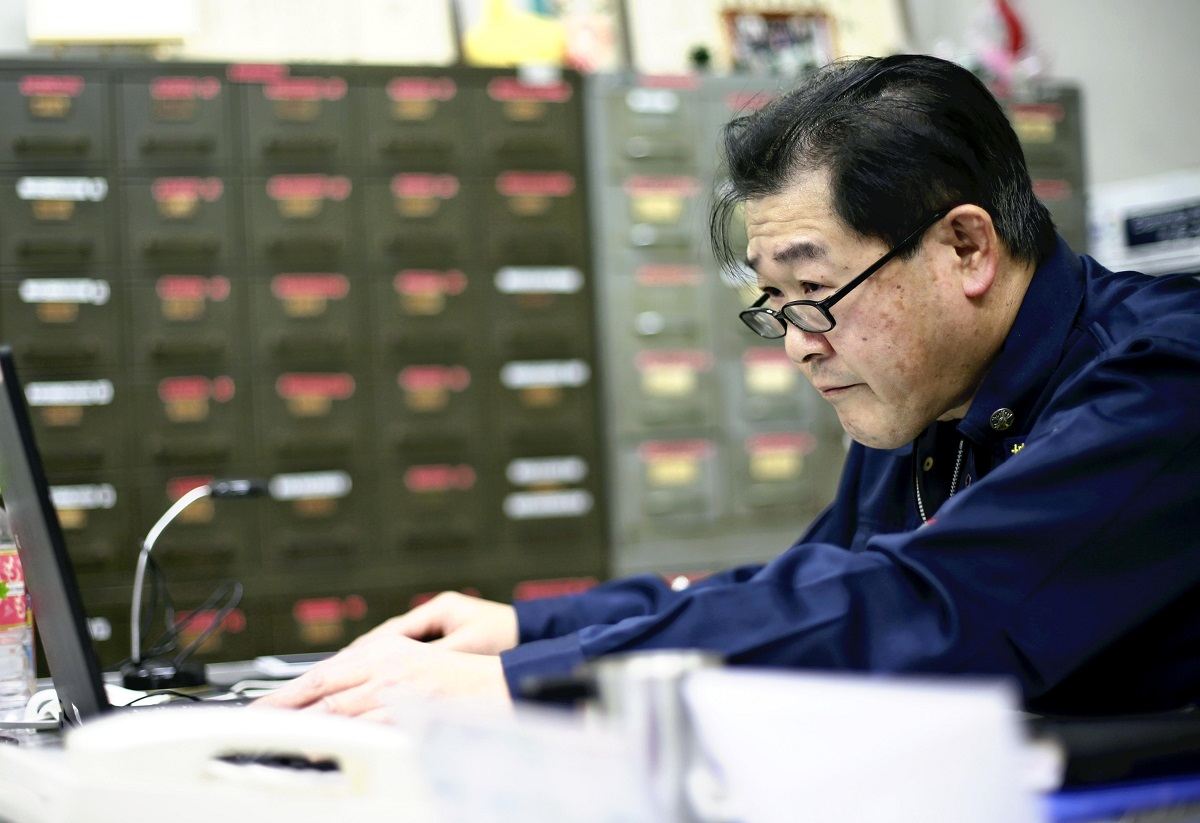
Shinichi Sugawara, chief of an unidentified decedents and missing persons investigation unit, looks inside a cabinet at the Miyagi Prefectural Police Headquarters on Feb. 8. Cabinets in the unit’s office contain photographs and files on unidentified victims of the Great East Japan Earthquake.
Identified with a postage stamp
Many of the victims of the Great East Japan Earthquake were swept away by the tsunami and later found far from where they presumably would have been when tragedy struck on March 11. Also, a significant number of bodies suffered extensive burns from fire after the disaster, hindering identification efforts. All too often, victims’ next of kin could not be tracked down in the chaos after the disaster.
Yet resourceful investigators have managed to identify many of these bodies, turning to unlikely forensic clues. In one instance, traces of saliva left on a postage stamp provided the conclusive evidence police needed to return a victim’s body to her family.
The woman had been found near a seawall at a fishing port in April 2011. The Miyagi prefectural police released a likeness, but it took nearly eight years before the sketch produced a promising lead. In March 2019, a woman contacted the police to say that the portrait resembled someone she knew. Thanks to this tip, the police were able to track down a relative and collect a DNA sample, from the stamp on a letter sent by the victim in 2009. The DNA sample was a match, and in April 2019, the deceased was identified as a 60-year-old woman who had lived in Onagawa.
The Iwate prefectural police have also identified several victims using DNA analysis in recent years, at last putting names to bodies that were found shortly after the disaster. However, their work is far from done. The remains of 48 people still need to be accounted for in Iwate, and a senior prefectural official said: “We intend to track down the identities of every last one.”
In Fukushima Prefecture, all the remains recovered to date have been identified.
Related Tags
"Society" POPULAR ARTICLE
-

M4.9 Earthquake Hits Tokyo, Neighboring Prefectures
-

M7.5 Earthquake Hits Northern Japan; Tsunami Waves Observed in Hokkaido, Aomori and Iwate Prefectures
-
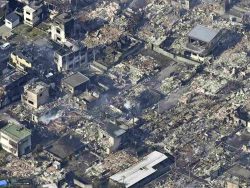
Fire Damages 170 Buildings in Oita, Western Japan
-

Beloved Cat Stationmaster Nitama in Wakayama Pref. Passes Away at 15
-

M5.7 Earthquake Hits Japan’s Kumamoto Pref., Measuring Upper 5 Intensity, No Tsunami Expected
JN ACCESS RANKING
-

Japan’s Hopes for Seafood Exports Shot Down in China Spat
-

Japan to Charge Foreigners More for Residence Permits, Looking to Align with Western Countries
-

Keidanren Chairman Yoshinobu Tsutsui Visits Kashiwazaki-Kariwa Nuclear Power Plant; Inspects New Emergency Safety System
-

Japan Exports Rise in October as Slump in U.S. Sales Eases
-

Niigata Gov. to OK Restart of N-Plant; Kashiwazaki-Kariwa May Be Tepco’s 1st Restarted Plant Since 2011


